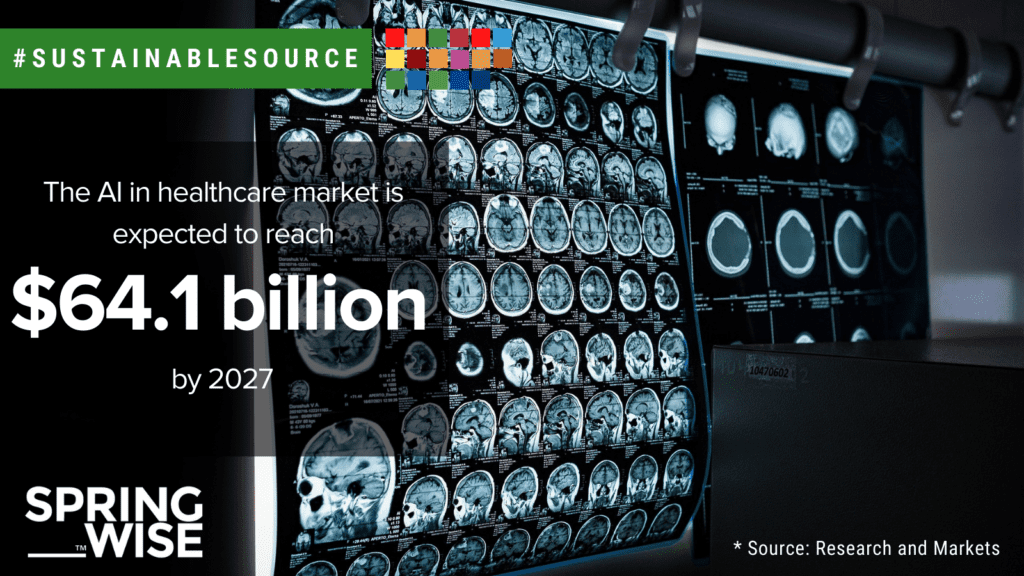Innovation and SDG 3: good health and wellbeing
Between 2000 and 2019, global life expectancy increased by more than six years. And over the long term, average life expectancy has increased from less than 30 in 1770 to over 70 in 2019. Simply put, people are living long than ever – a testament to the exponential gains in medical knowledge that have accompanied our modern age.
But while the overall story of global healthcare is a positive one, the COVID-19 pandemic has reminded us not to be complacent. Aside from the immediate impact of the crisis, huge disparities remain between different healthcare systems, and the pandemic has highlighted varying levels of resilience and preparedness. Moreover, the toll of endemic infectious disease remains high in some regions. In 2020, 1.5 million people died from tuberculosis, 680,000 from AIDS-related illnesses, and 627,000 from malaria. And, while people are living longer, increases in the number of years a person can expect to live in good health have not kept pace with overall life expectancy.
Global health and wellbeing challenges therefore remain, and innovation will play an important role in tackling them – from artificial intelligence that streamlines diagnosis to clothing that helps to prevent malaria.
Health and AI
One major frontier of medical innovation is artificial intelligence (AI). The AI in healthcare market is forecast to reach $64.1 billion (around €59 billion) by 2027. AI is scaling up and automating tasks that could previously be completed only by human health professionals – freeing up the time of doctors and nurses, while helping to reduce human error. For example, a network of 11 medical facilities in Chicago, is trialling an AI system that flags and follows-up on signs in medical images of illnesses beyond those that were the subject of the original referral.
With AI applications growing in number, there is strong demand for large amounts of patient data to test and train algorithms. One startup is on a mission to provide the data needed for validation studies that test the effectiveness of AI healthcare applications – without compromising patient privacy.

Mental Health
Recent decades have seen growing understanding of the importance of mental health. According to the World Health Organizatio(WHO), around 20 per cent of the world’s children and adolescents have a mental health condition. The seriousness of mental health is enshrined in target 3.4 within SDG 3 – which calls for the promotion of mental health and well-being. Innovation is helping to improve access to mental health services. For example, one app uses AI to provide clinically proven mental health therapy. The platform offers affordable psychological support regardless of location and time.
Given the prevalence of mental health conditions among children, innovators are focusing on solutions tailored to the needs of families. For example, another mental health app helps families have difficult conversations using a framework based on empirical, evidence-based research and insights.

Health coverage and access to medicines
According to the United Nations, less than half of the global population is covered by essential health services. And 2 billion people still lack access to medicines. Target 3.8 within SDG 3 sets the task of achieving universal health coverage, encompassing financial risk protection and access to services, medicines, and vaccines. Here innovation can help. For example, one Nigerian startup is aiming to make healthcare accessible and affordable in low- and middle-income countries. The company does this by bundling together several healthcare services—including insurance plans, telemedicine, and prescription delivery—under a single flat fee. Another, related issue is the prevalence of fake pharmaceuticals. An online marketplace combats this problem with a platform that connects patients with trusted, vetted suppliers.
Contagious disease
Much progress has been made in tackling contagious diseases such as HIV/AIDS, tuberculosis, and malaria. For example, over 6.2 million malaria deaths were averted between 2000 and 2015. Nonetheless, , according to the WHO, there were 241 million malaria cases in 2021. One startup is making bamboo sleepwear with insect repellent incorporated into the fabric. This helps to prevent mosquito bites that transmit malaria-causing parasites.
Tuberculosis (TB) is another disease that remains deadly. In 2020, an estimated 9.9 million people fell ill with TB. To enable TB diagnosis in remote regions, a Mexican biotechnology startup has developed an affordable diagnostic system that requires no electricity, costs less than €1 per test, and returns results in 15 minutes.

Reproductive health
According to the WHO, every day in 2017, approximately 810 women died from preventable causes related to pregnancy and childbirth. Of these deaths, 94 per cent were in low- and lower-middle-income countries. A key cause of maternal death is a lack of medical expertise, with over 55 per cent of countries having fewer than 40 nursing and midwifery professionals per 10,000 people. However, innovation can still play a role in improving reproductive health. For example, a new blood test—which can be taken around the sixth month of pregnancy—could signal the likelihood of a premature birth.
Words: Matthew Hempstead
Know more innovations supporting SDG 3? Spread the word!
Sign up to the Sustainable Source newsletter to
receive regular updates on the green innovations that matter and to get our
insights into innovation and the SDGs direct to your inbox.
11th April 2022

